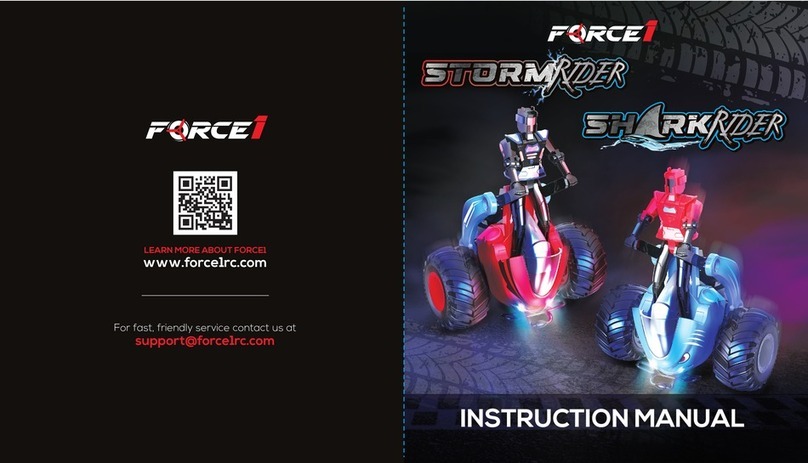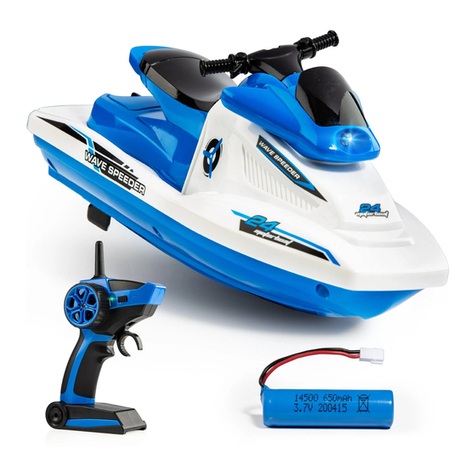VELOCITY RC BOAT User Manual
5
LI-ION BATTERY CARE INSTRUCTIONS
Temperature:
• Heat is a known factor in battery res. If a battery is pushed beyond 60ºC/140°F during discharging or
charging, problems could occur due to metallic lithium generation, which damages the cell.
• After a ight, you may nd your batteries are warm or hot to the touch. Give the batteries a chance to
cool down before recharging.
• Do not leave batteries exposed to direct sunlight.
Storage:
• Store batteries at normal room temperature and avoid direct exposure to sunlight or heat. When storing
LiPo / Li-Ion batteries for any length of time, they should ideally be stored at a temperature of between
5ºC/40°F & 27ºC/80°F.
• If you have a battery pack fully charged, do not try to charge further until it has been partially or fully
discharged!
Usage:
• Leave time between charging and using the battery.
• To extend the lifetime of the battery, plan to end operation with about 20% power remaining in the
batteries (rather than completely draining them)
• If the battery is pushed beyond its limits, the battery could get hot and the performance will drop.
• When using the battery for a long time, the battery will increase in temperature. If it is sealed, the air
inside will inate rapidly causing further heating.
Charging:
• Do NOT overcharge the battery. It may cause overheating and in turn this overheating could damage
the battery or melt/burn surfaces it is resting on to charge.
• Never try charging a battery that has been damaged, you run the risk of re! Cells that are obviously
swollen or have physical damage should never be used and careful disposal is required, especially if
the cells are swollen.
• If you feel like the battery is not charging properly, try plugging it into another charger if one is available
and see if the issue persists. If the charger is defective you should discard it immediately and go to
Force1RC.com to purchase a replacement. You may also contact our support team at support@force1rc.
com so we can arrange to ship you a replacement charger and/or batteries if within the warranty period.
• Remove the battery from the device, inspect the battery and battery connections. Ensure there is no
damaged to the battery, battery pins or contacts on the device. If you have damage to the battery or
charging pins, discontinue use and visit Force1RC.com to purchase replacement parts. You may also
contact us at support@force1rc.com for a replacement piece if within warranty.
• After crashing the boat, always check the battery and connectors for damage. If any part is damaged
get spare parts from Force1 RC.com.
• Please use genuine factory spare parts replacements from Force1RC.com
WARNING:
DO NOT LEAVE BATTERY
CHARGING UNSUPERVISED





























